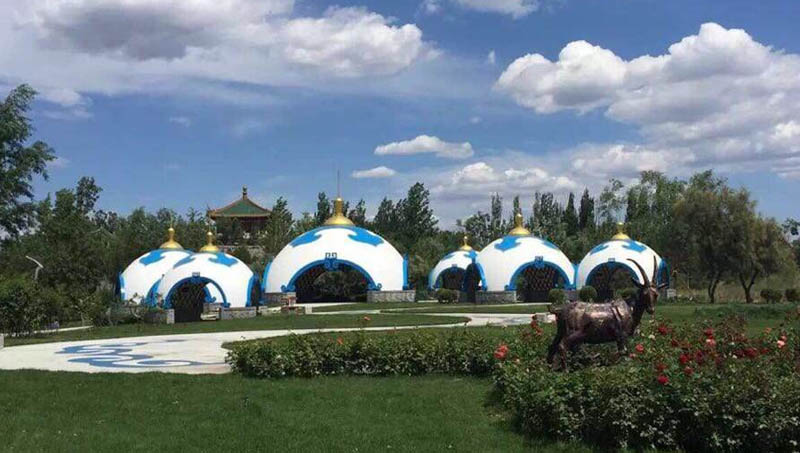
2. Around 3000 BC, a number of yurts appeared on the vast grasslands. The basis was the image of the yurts on the rock paintings of the Awulale Mountain in Xinjiang. "From the scenes shown in the rock paintings, the tents have a lattice structure. (In other words, Ulanhai has become a yurt), some yurts have windows, some yurts have patterns and patterns, and some yurts have developed into Kuishai after being equipped with double wheels." The author of this article may have mistaken the time. The rock paintings of the Awulali Mountains are recognized by the archaeological circle as the remains of the Serbs, and the Serbs have been in Central Pamir, Tianshan Mountains and most of northern Xinjiang since 3000 years ago. It is active, so the time of the rock paintings is not 3000 BC but 3000 years ago. The image of the dome on the rock paintings of Awulale Mountain seems to be more like the third weaving method of "weaving willows as a room" mentioned above, that is, standing the wicker in the ground with a rope tied at the top.
3. The original shape of the yurt was produced and popular in Mongolia before the 3rd century BC. It is evidenced by the rock paintings of Tabsi, Habut County, Neihangyan Province, and the Bujaer rock paintings in the virgin forest of Siberia. "The patterns drawn by these two petroglyphs are very similar to yurts in terms of overall outlines. Here, the author of this article has not determined that it is a yurt, but thinks it is the "original shape" of a yurt. This is a more cautious and scientific judgment. It appears in the virgin forest. As we all know, the yurt is a unique building on the grassland, and it is the creation of nomads. The yurt cannot appear in the virgin forest of Siberia. There are many trees in the forest, which can be taken at any time and abandoned during migration. In the past, the Oroqen people lived in this way when they hunted in the Xing’an Mountains. The building components will not become a burden of life. But after arriving in the grassland, the ecological environment of the grassland is very few trees. This condition requires nomadic people to recycle. Architectural components. Judging from the dome shape reflected in the rock paintings, the production method is likely to be the third method of "weaving willows as chambers".
4. Yurt-style buildings existed in the Han Dynasty, based on two basis: First, "Historical Biography of the Xiongnu" and "Historical Biography of Wuhuan Xianbei" have called the residences of the Xiongnu, Xianbei, and Wuhuan as "Qinglu", indicating that they lived The yurt-style house is already a dome. If its top is round, its wall must be a'Hana'-shaped round wall." The second is that the "Tian" pattern was found in the Yinshan rock paintings, which was drawn based on the external shape of the dome.
The author believes that the basis for this point of view is insufficient. I have discussed one argument in the previous article, that is, there were various styles of the dome in the pre-Qin period. Regarding the second argument, the "Tian" pattern is described as the shape of the dome with subjective speculation. The connection between the graphics and the dome is also far-fetched. The core idea of the above viewpoints is that the yurt-style dome house existed before the Qin and Han Dynasties. Of course, we cannot rule out the possibility of the existence of yurt-style domes before the Qin and Han dynasties, but the fact that the yurt-style buildings existed before the Qin and Han dynasties is obviously unconvincing based on the above arguments. Based on the author's combing and analysis of historical data, it is believed that the Northern Wei Dynasty was the period of the formation of the Mongolian yurt, which can be promoted through documentation. During this period, the "Baizizhang" used by Tuoba Xianbei, Tuyuhun, Rouran, and Gaoche had the characteristics of a yurt.
[This content is reprinted on other official websites. If the content is infringing or incorrect, please let us know and we will delete it immediately]